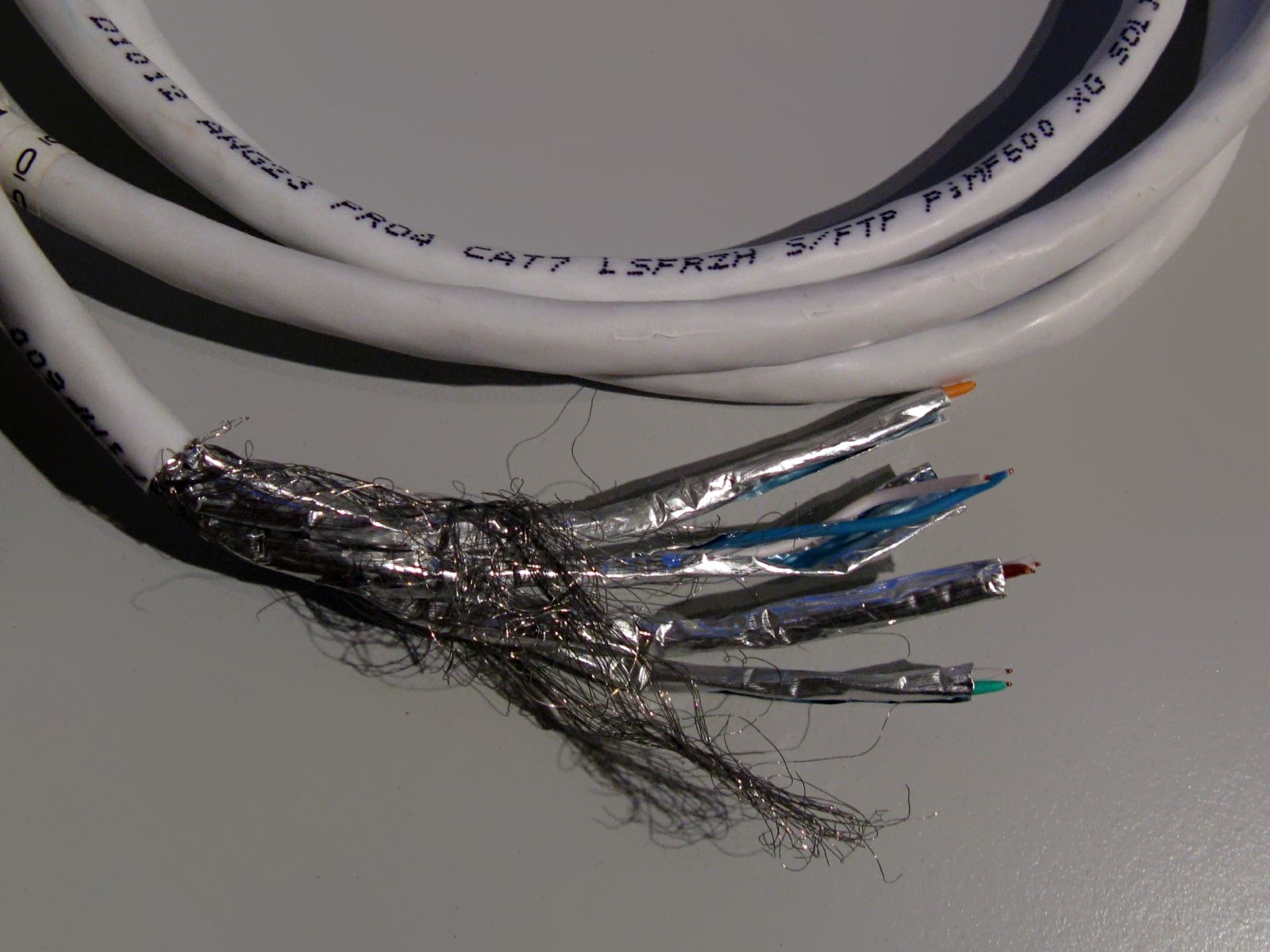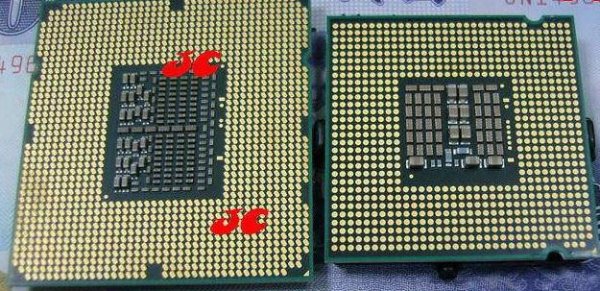In computer networks, a proxy server is a server (a computer system or an application program) that acts as an intermediary for requests from clients seeking resources from other servers. A client connects to the proxy server, requesting some service, such as a file, connection, web page, or other resource, available from a different server. The proxy server evaluates the request according to its filtering rules. For example, it may filter traffic by IP address or protocol. If the request is validated by the filter, the proxy provides the resource by connecting to the relevant server and requesting the service on behalf of the client. A proxy server may optionally alter the client's request or the server's response, and sometimes it may serve the request without contacting the specified server. In this case, it 'caches' responses from the remote server, and returns subsequent requests for the same content directly.
 Schematic representation of a proxy server, where the computer in the middle acts as the proxy server between the other two.
Schematic representation of a proxy server, where the computer in the middle acts as the proxy server between the other two.A proxy server has many potential purposes, including:
* To keep machines behind it anonymous (mainly for security).[1]
* To speed up access to resources (using caching). Web proxies are commonly used to cache web pages from a web server.[2]
* To apply access policy to network services or content, e.g. to block undesired sites.
* To log / audit usage, i.e. to provide company employee Internet usage reporting.
* To bypass security/ parental controls.
* To scan transmitted content for malware before delivery.
* To scan outbound content, e.g., for data leak protection.
* To circumvent regional restrictions.
A proxy server that passes requests and replies unmodified is usually called a gateway or sometimes tunneling proxy.
A proxy server can be placed in the user's local computer or at various points between the user and the destination servers on the Internet.
A reverse proxy is (usually) an Internet-facing proxy used as a front-end to control and protect access to a server on a private network, commonly also performing tasks such as load-balancing, authentication, decryption or caching.
Caching proxy server
A caching proxy server accelerates service requests by retrieving content saved from a previous request made by the same client or even other clients. Caching proxies keep local copies of frequently requested resources, allowing large organizations to significantly reduce their upstream bandwidth usage and cost, while significantly increasing performance. Most ISPs and large businesses have a caching proxy. These machines are built to deliver superb file system performance (often with RAID and journaling) and also contain hot-rodded versions of TCP. Caching proxies were the first kind of proxy server.
Another important use of the proxy server is to reduce the hardware cost. An organization may have many systems on the same network or under control of a single server, prohibiting the possibility of an individual connection to the Internet for each system. In such a case, the individual systems can be connected to one proxy server, and the proxy server connected to the main server.
Web proxy
A proxy that focuses on World Wide Web traffic is called a "web proxy". The most common use of a web proxy is to serve as a web cache. Most proxy programs provide a means to deny access to URLs specified in a blacklist, thus providing content filtering. This is often used in a corporate, educational or library environment, and anywhere else where content filtering is desired. Some web proxies reformat web pages for a specific purpose or audience, such as for cell phones and PDAs.
.
Content-filtering web proxy
A content-filtering web proxy server provides administrative control over the content that may be relayed through the proxy. It is commonly used in both commercial and non-commercial organizations (especially schools) to ensure that Internet usage conforms to acceptable use policy. A content filtering proxy will often support user authentication, to control web access. It also usually produces logs, either to give detailed information about the URLs accessed by specific users, or to monitor bandwidth usage statistics. It may also communicate to daemon-based and/or ICAP-based antivirus software to provide security against virus and other malware by scanning incoming content in real time before it enters the network.
Anonymizing proxy server
An anonymous proxy server (sometimes called a web proxy) generally attempts to anonymize web surfing. There are different varieties of anonymizers. One of the more common variations is the open proxy. Because they are typically difficult to track, open proxies are especially useful to those seeking online anonymity, from political dissidents to computer criminals
Access control: Some proxy servers implement a logon requirement. In large organizations, authorized users must log on to gain access to the web. The organization can thereby track usage to individuals.
Hostile proxy
Proxies can also be installed in order to eavesdrop upon the dataflow between client machines and the web. All accessed pages, as well as all forms submitted, can be captured and analyzed by the proxy operator. For this reason, passwords to online services (such as webmail and banking) should always be exchanged over a cryptographically secured connection, such as SSL.
Intercepting proxy server
An intercepting proxy combines a proxy server with a gateway or router (commonly with NAT capabilities). Connections made by client browsers through the gateway are diverted to the proxy without client-side configuration (or often knowledge). Connections may also be diverted from a SOCKS server or other circuit-level proxies.
Intercepting proxies are also commonly referred to as "transparent" proxies, or "forced" proxies, presumably because the existence of the proxy is transparent to the user, or the user is forced to use the proxy regardless of local settings.
Purpose
Intercepting proxies are commonly used in businesses to prevent avoidance of acceptable use policy, and to ease administrative burden, since no client browser configuration is required. This second reason however is mitigated by features such as Active Directory group policy, or DHCP and automatic proxy detection.
Intercepting proxies are also commonly used by ISPs in some countries to save upstream bandwidth and improve customer response times by caching. This is more common in countries where bandwidth is more limited (e.g. island nations) or must be paid for.
Transparent and non-transparent proxy server
The term "transparent proxy" is most often used incorrectly to mean "intercepting proxy" (because the client does not need to configure a proxy and cannot directly detect that its requests are being proxied). Transparent proxies can be implemented using Cisco's WCCP (Web Cache Control Protocol). This proprietary protocol resides on the router and is configured from the cache, allowing the cache to determine what ports and traffic is sent to it via transparent redirection from the router. This redirection can occur in one of two ways: GRE Tunneling (OSI Layer 3) or MAC rewrites (OSI Layer 2).
Forced proxy
The term "forced proxy" is ambiguous. It means both "intercepting proxy" (because it filters all traffic on the only available gateway to the Internet) and its exact opposite, "non-intercepting proxy" (because the user is forced to configure a proxy in order to access the Internet).Forced proxy operation is sometimes necessary due to issues with the interception of TCP connections and HTTP. For instance, interception of HTTP requests can affect the usability of a proxy cache, and can greatly affect certain authentication mechanisms. This is primarily because the client thinks it is talking to a server, and so request headers required by a proxy are unable to be distinguished from headers that may be required by an upstream server (esp authorization headers). Also the HTTP specification prohibits caching of responses where the request contained an authorization header.
Suffix proxy
A suffix proxy server allows a user to access web content by appending the name of the proxy server to the URL of the requested content (e.g. "en.wikipedia.org.6a.nl").
Open proxy server
Because proxies might be used to abuse, system administrators have developed a number of ways to refuse service to open proxies. Many IRC networks automatically test client systems for known types of open proxy. Likewise, an email server may be configured to automatically test e-mail senders for open proxies.
Reverse proxy server
A reverse proxy is a proxy server that is installed in the neighborhood of one or more web servers. All traffic coming from the Internet and with a destination of one of the web servers goes through the proxy server. There are several reasons for installing reverse proxy servers:
* Encryption / SSL acceleration: when secure web sites are created, the SSL encryption is often not done by the web server itself, but by a reverse proxy that is equipped with SSL acceleration hardware. See Secure Sockets Layer. Furthermore, a host can provide a single "SSL proxy" to provide SSL encryption for an arbitrary number of hosts; removing the need for a separate SSL Server Certificate for each host, with the downside that all hosts behind the SSL proxy have to share a common DNS name or IP address for SSL connections.
* Load balancing: the reverse proxy can distribute the load to several web servers, each web server serving its own application area. In such a case, the reverse proxy may need to rewrite the URLs in each web page (translation from externally known URLs to the internal locations).
* Serve/cache static content: A reverse proxy can offload the web servers by caching static content like pictures and other static graphical content.
* Compression: the proxy server can optimize and compress the content to speed up the load time.
* Spoon feeding: reduces resource usage caused by slow clients on the web servers by caching the content the web server sent and slowly "spoon feeding" it to the client. This especially benefits dynamically generated pages.
* Security: the proxy server is an additional layer of defense and can protect against some OS and WebServer specific attacks. However, it does not provide any protection to attacks against the web application or service itself, which is generally considered the larger threat.
* Extranet Publishing: a reverse proxy server facing the Internet can be used to communicate to a firewalled server internal to an organization, providing extranet access to some functions while keeping the servers behind the firewalls. If used in this way, security measures should be considered to protect the rest of your infrastructure in case this server is compromised, as its web application is exposed to attack from the Internet.
Tunneling proxy server
A tunneling proxy server is a method of defeating blocking policies implemented using proxy servers. Most tunneling proxy servers are also proxy servers, of varying degrees of sophistication, which effectively implement "bypass policies".A tunneling proxy server is a web-based page that takes a site that is blocked and "tunnels" it, allowing the user to view blocked pages. A famous example is elgooG, which allowed users in China to use Google after it had been blocked there. elgooG differs from most tunneling proxy servers in that it circumvents only one block.
Content filter
Many work places, schools, and colleges restrict the web sites and online services that are made available in their buildings. This is done either with a specialized proxy, called a content filter (both commercial and free products are available), or by using a cache-extension protocol such as ICAP, that allows plug-in extensions to an open caching architecture.
equests made to the open internet must first pass through an outbound proxy filter. The web-filtering company provides a database of URL patterns (regular expressions) with associated content attributes.





